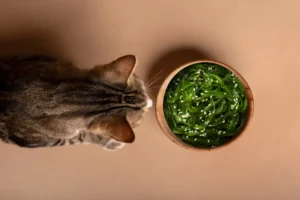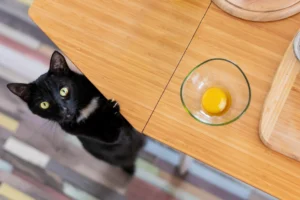To those of you who have chosen to feed your pets healthy, human-grade cooked food, we here at Petchef want to express our gratitude. Thank you for joining us in our mission to improve and enrich the lives of your pets, and in the process, your own!
If you still haven’t decided to take the plunge into fresh pet food made with real ingredients, then read on. When you see how easy it is to transition your dog or cat into this new lifestyle, we would be happy to invite you to join us on this journey.
Petchef provides a nutritionally balanced, biologically-appropriate diet that is free from any artificial additives and preservatives. This diet has many benefits: from a shinier coat, better eyesight and higher energy, to increasing their general life quality, and lifespan.
How to transition to fresh food
For dogs or cats who have previously eaten a non-fresh diet (such as kibble), we recommend a 4 to 7-day transition period for dogs and a 7 to 10-day transition period for cats to allow the bacteria in their gut to adjust to this new diet.
Mixing the previous diet with the Petchef diet gradually over a few days will give your pets a taste of the new food without shocking their system. If your pet is particularly fussy, or has been on a particular diet for many years, you might need to be even more patient. So… just take it slow!
We especially want to make sure you avoid any side effects of switching to quickly, like diarrhea or stomach upset.
Also take note that for some pets, it is normal for them to not be as interested in the new food, initially. Don’t give up! Habits are hard to kick (as we humans well know), so it’ll take some more of your attention to help a picky pet bridge over to the other side successfully.
Step 1: Place all food portions in the freezer.
Our products are made of all-natural animal-based meats, vegetables, herbs and oils, which means they are perishable, so it is key they are put in freezer immediately.
Step 2: Place your pet’s first daily portions to defrost in the fridge for next day consumption.
As in all meat products, bacteria is ever-present. If heated suddenly, you can quickly bring meat into the “danger zone” where bacteria multiply the most rapidly, causing smelly, spoiled food.
So please keep all our meals in the freezer and defrost portions for the next 1 day for smaller portions (up to 200g each) and up to 2 days for larger portions (starting with our 250g portions) in the fridge to thaw before serving.
No microwaving or immediate heating!
A safe alternative to defrosting in the fridge is submerging the first meal in a bowl of cold or lukewarm water to thaw and serve immediately.
Remember that neither dogs or cats can eat hot food as their bodies are not evolved sufficiently to eat hot!
Step 3: Remove all other food sources for the duration of the transition
If you currently leave out a bowl of food for your pet so he can graze as and when he pleases, please take this away so that he has no opportunity to sneak in a meal to satisfy his hunger during transition.
Also, resist from giving any any treats or table scraps, at least for the time being!
Step 4: Take 1-2 days to feed a 75%-25% ratio
Plain and simple: In your pet’s first daily meal of the transition, make sure 75% is your pet’s previous diet and only 25% of the meal consists of the new Petchef food.
If your pet is picky and they aren’t having it after 15 minutes of the food being out, remove the bowl, refrigerate, and serve again at the next meal time. You can reduce ratio to 90-10 instead, and proceed with 75-25 the following day instead.
If your pet is still not eating, even after removing the food in the first feeding, and giving the food in the second feeding, be sure to add 1-2 pumps of Salmon Oil, which you can add to your meal plan. The smell will make the food much more tantalizing given the scent For dogs and cats alike!
Step 5: Make days 3 and 4 a 50%-50% split
After you have mastered the 75-25 split, you can now graduate to feed 50% of your pet’s previous diet and 50% the new Petchef food. They should be getting more used to the fresh ingredients by now but if they are still not finishing their meals then follow the recommendations given in Step 4, and take the transition more slowly with some salmon oil!
Step 6: Feed your pet a 25%-75% ratio on days 5 and 6
Now you can feed 75% Petchef and 25% the previous diet. If not spotted on Day 1, your picky pet should be showing an increase in appetite. Almost there!
Step 7: Fully transitioned to Petchef!
By day 7, you’ve made it! Donate that old bag of kibble to your local shelter and feel relieved that you have made a successful transition to a healthier doggo or kitto.
With Petchef’s food, you’ll likely find your pet begging for more. The key is to get there gradually, and maybe even being a little clever when it comes to convincing your pet that the new food will be better than the old one.
When it comes to diet, appearances are everything, and a shiny, silky coat, with no dry skin, are just some of the better outcomes of a fresh diet. However, these are only surface-level. I am sure if you watch and listen close enough, your dog or cat will smile and say ‘Thanks’.











